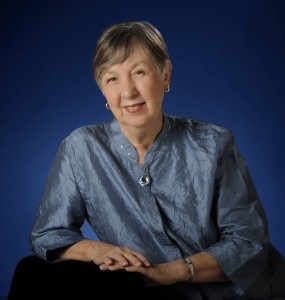Tools for Transformation
2012
Two Perspectives on Tools for Transformation
Dr. Amit Nagpal, New Delhi, India, and
Dr. Janet Smith Warfield, Florida, USA
_______________________________________________________________________________________
Dr. Amit Nagpal’s Perspective
 Transformation – Why, When and How
Transformation – Why, When and How
Transform simply means we cross and move beyond our current form.
Why transform
Life is a journey and each birth is a step towards the final goal – enlightenment (or something similar). The soul learns its lessons through experiences, mistakes and conscious efforts to grow.
Experiences and mistakes may teach us and transform us for the better but we can learn faster (and with lesser mistakes and pain) by taking conscious efforts for our transformation. Transformation implies inner transformation, which impacts our external behavior though.
When to Transform
Only one thing is constant in this world and that is change. Transformation also becomes necessary to adapt to the external changes (adaptability) but it tends to be reactive. We can rather go for proactive change.
How to Transform
Here is a sequence of steps which can be undertaken for self-transformation:-
- Make a list of your areas of improvement (weaknesses or strengths to be further improved)
- Prioritize
- Set goals
- Take action
- Monitor progress
- Take corrective action, if required (or revise goals)
A famous saying goes;
“No matter how good intentions we may have, the world looks only at our presentations.
No matter how good presentations we may have, God looks at only our intentions.”
To fit into the world (by the way, you need to decide how much you want to fit), we need to package ourselves and manage our image/impression. But to find peace or to connect with higher consciousness/power, we must work on improving our intentions, making them more and more pure. Gratitude and positive interpretation of events helps us in purifying our intent.
I once posted on Facebook,
“When you become a little more mindful,
You become a little more soulful.
When you become a little more soulful,
You become a little more mindful.
Little by little, the journey must go on.”
It will very often happen that when you will take two steps forward, life will push you one step backward. Fine, keep trying; just keep rising every time you fail.
There will be times, you will be too depressed. It is believed that every human being seriously contemplates suicide at least once in life; we all go through trying times. You will feel that life has over-punished you for a small crime and sometimes in spite of the best of efforts, things will not work out.
Just remember, so what if life slapped you hard. Get up and carry on, because the trouble of today is the joke of tomorrow.
_____________________________________________________________________________
Dr Amit Nagpal is a Personal Branding Consultant & Deepest Passion Coach. He is based in New Delhi, India and specializes in personal branding with a holistic touch. His philosophy is, “Enlarge as a Human Being, Excel as a Social Media Being and Evolve as a Personal Brand”
______________________________________________________________________________
Dr. Janet Smith Warfield’s Perspective
 What is personal transformation1, and why would we want to experience it?
What is personal transformation1, and why would we want to experience it?
Personal transformation is like looking at an optical illusion. The lines, shapes, and colors on the paper don’t change. What changes is how our minds shape what is on the paper, the words we use to describe what we see, how we feel about what we see, and the actions we take as a result.
The real world is the same way. Nothing out there changes.2 What changes is the way our minds shape what is out there. Personal transformation is suddenly seeing the world through new eyes.
Do we want to see a man’s face or do we want to see the word “Liar?” Which makes us feel better? Which makes our relationships work more smoothly?
When personal transformation happens, we are suddenly free. We realize we can choose in each and every moment the perspectives, words, and actions that bring us the greatest peace and happiness.
If we desire to experience personal transformation, how do we bring it into our lives? With the optical illusion, we can’t force ourselves to see the word “Liar” if we only see a man’s face. We can’t force ourselves to see a man’s face if we only see the word “Liar.”
Likewise, we can’t force ourselves to experience personal transformation. We can only commit to using tools and practices which support shifts in perception through sudden moments of clarity. We pick a tool from the cornucopia of possibilities, try it out, and observe how it works. If we don’t like one tool, we try another until we find one we like.
Experiencing personal transformation in the real world is much more challenging than seeing the different perspectives of an optical illusion. In the real world, the perspectives we cling to are usually charged with emotion such as guilt, fear, rage, despair, or pride. If we are suffering from the shock of a spouse’s betrayal, how can we transform betrayal into trust? If we are suffering from the death of a child, how can we transform grief into life purpose and meaning?
Personal transformation in the real world is also challenging because we cling to conditioned beliefs we’ve been taught as children. Usually, we’re not even aware that our beliefs are conditioned. They may have been such wonderful guidelines that we honor them as Truth. The fact is that wonderful guidelines are never Truth. They are only tools that work in many situations for particular purposes.
Here are some time-tested tools and practices to help us go deep within, shift perspectives and see through new eyes:
- Journaling
- Meditation
- Vision boards
- Ropes courses
- Labyrinths
- Forgiveness
- Gratitude
- Mantras
- Drumming
- Toning
- Crystal bowls
- Focusing on the breath, e.g., soham breathing
- Heart resonance
- Yoga
- Martial arts
The list keeps growing as our awareness and creativity expand and we shift into greater and greater abundance.
Amit and I will be exploring each tool and practice in depth in subsequent blogs.
________________________________________________________________________________________
1. Personal Transformation is only one aspect of transformation. Other aspects are marital transformation, family transformation, community transformation, world transformation, and more.
2. Since I am writing with the intention of clarifying personal transformation, I am stating that nothing out there changes. If I were writing with the intention of clarifying intention, I would be stating that what is out there does change depending on the intentions we set.
________________________________________________________________________________________
Dr. Janet Smith Warfield serves wisdom-seekers who want understanding and clarity so they can live peaceful, powerful, prosperous lives. Through her unique combination of holistic, creative, right-brain transformational experiences and 22 years of rigorous, left-brain law practice, she has learned how to sculpt words in atypical ways to shift her listeners into experiences beyond words, transforming turmoil into inner peace. For more information, see www.wordsculptures.com, www.wordsculpturespublishing.com, and www.janetsmithwarfield.com.










![JanetSmithWarfield300[1]](http://janetsmithwarfield.com/wp2/wp-content/uploads/2011/12/JanetSmithWarfield30011-150x150.jpg)








 I had no problem with the first three requests. I never chewed gum, I didn’t often speak in front of strangers, and being punctual mattered.
I had no problem with the first three requests. I never chewed gum, I didn’t often speak in front of strangers, and being punctual mattered.![JanetSmithWarfield300[1]](http://janetsmithwarfield.com/wp2/wp-content/uploads/2011/11/JanetSmithWarfield3001-150x150.jpg)




Comment